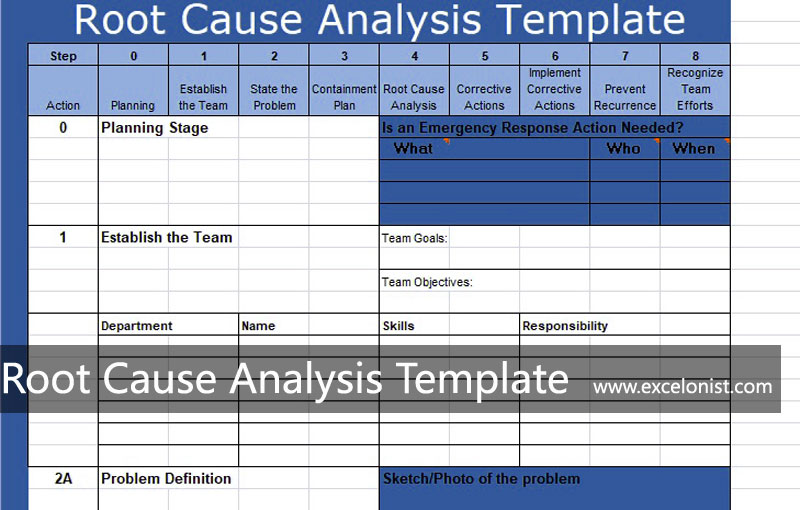Root cause analysis (RCA) is a structured approach towards identification of “root causes” of problems and potential issues. It can be used as a proactive or reactive approach.
Thank you for reading this post, don't forget to subscribe!It digs down to the rock bottom of an issue by getting step by step leads of links between each possible cause. It uses many other critical thinking tools for the identification and evaluation of the root causes of issues. Some are listed below;
- SCAMPER
- Brainstorming
- Mind-mapping
- Attribute Listing
- Visualization and Visual Prompts
- Synectic’s
- Questioning Assumptions
- Reverse Thinking
- Brain Writing
Root Cause Analysis
Root cause analysis is a technique used in the risk management phase of project management. It is used as a proactive approach in project management planning to answer the following questions about any identified potential risk;
- Is identified risk potential?
- What it may cause?
- What steps or mitigation strategies have to follow to minimize the likelihood of occurrence and impact?

Root cause analysis works on the principle of chain reactions that define everything that is linked together. This link can be direct or indirect and even an indirectly linked action can trigger the chain reaction to make the cause happen. It evaluates causes as one of below;
- Physical Causes: These are tangible causes that can be observed controlled physically.
- Human Causes: These are the errors generated by humans. Physical causes mostly develop from human errors or causes.
- Organizational Causes: These are errors developed due to the use of wrong or faulty processes, methodology, or policy for decision making.
Format of Root Cause Analysis Excel Template

Root cause analysis (RCA) template is a kind of report that is used to present in-depth details of each potential risk during the project planning stage and root causes of challenges faced during the project lifecycle. The key information this report should represent is;
- Issues Details (Issue Report Date, Issue Title/Name/ID)
- The issue to Report (Issues Description, Source, Criticality with justification)
- Possible Root Causes (Causes Description, Likelihood, Details with a list of clarifications)
- Suggested Solutions (Solution Description, Likelihood of Success based on testing and results, Associated Risks and the likelihood of their occurrence)
6 Steps Approach Used to Make Root Cause Analysis Template
- Define the Issue (Observations and Symptoms)
- Do the research (Existence, Duration, and Impact)
- Identify the chain of Issues or Causal factors (Sequence, Triggering Point, and Constraints)
- Identify Root Causes (Causal factors existence and real reasons)
- Identify recommendations (For minimize or mitigate the likelihood of reoccurrence)
- Implement the Solutions (Solutions, Framework of implementation, responsible person and associated risks)
The most important for root cause analysis is the identification or evaluation of root causes. There are a number of analysis tools used for this purpose, but the most popular and effective tools are;
- Ishikawa Diagram, Fishbone Diagram, or Cause and Effect Diagram
- Pareto Chart
- The 7 Whys Technique
- The 5 Whys Technique
- Scatter Diagram
- Barrier Analysis
- Change Analysis
- Causal Factor Tree Analysis (CFTA)
- Failure Mode and Effects Analysis (FMEA)
- Fault Tree Analysis
A complete guide on how to use Root Cause Analysis Template Excel, methodologies, project management approaches, and benefits.





Can I get a copy of this template? Thank you.
Can I get a copy of this template? Thank you.
Sure. You can download it from above links.